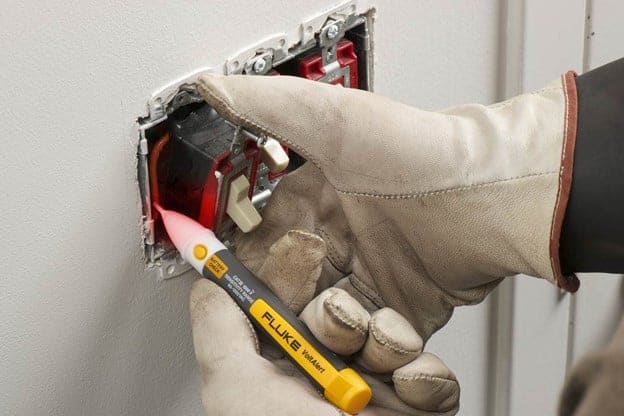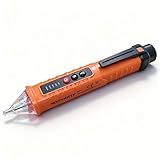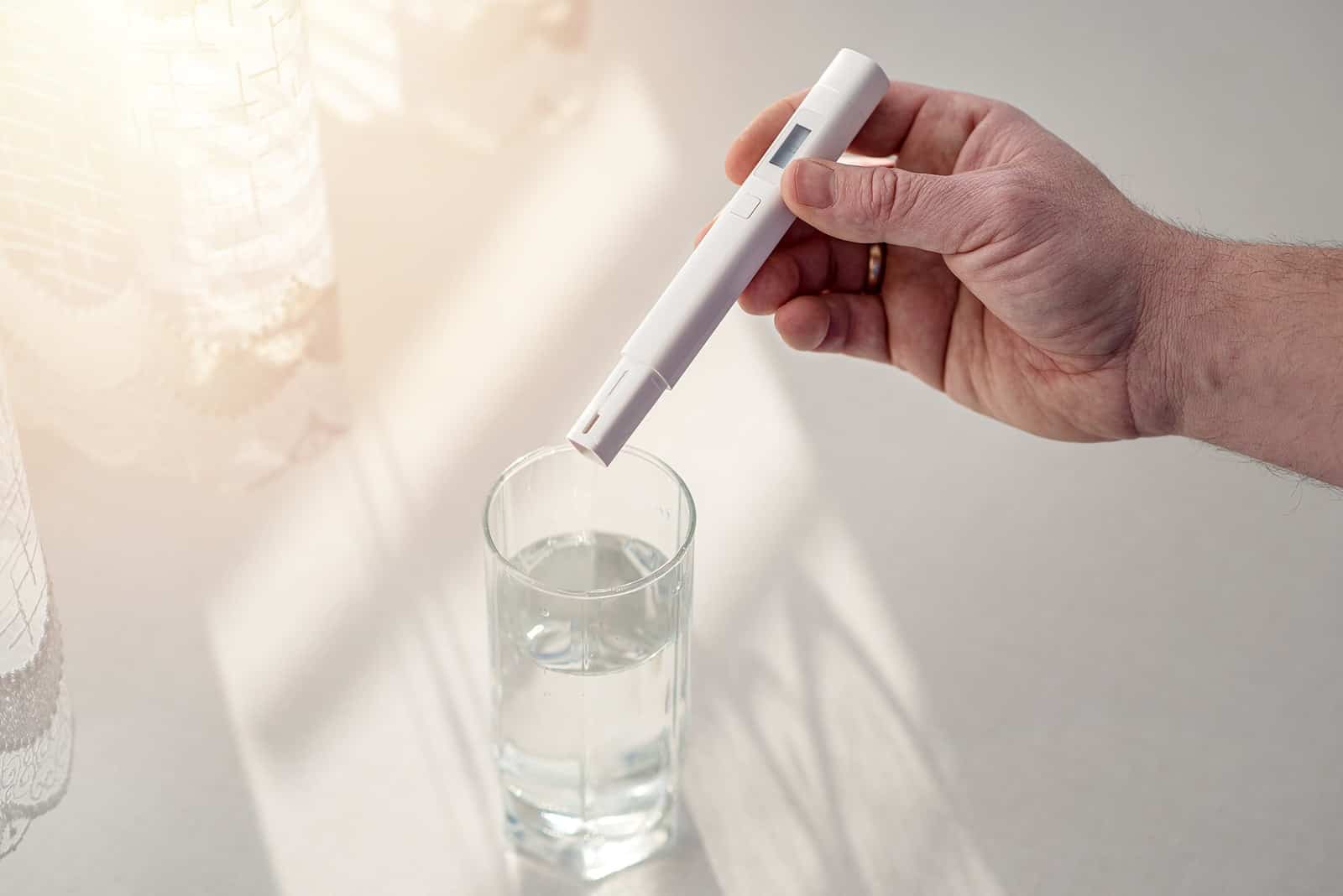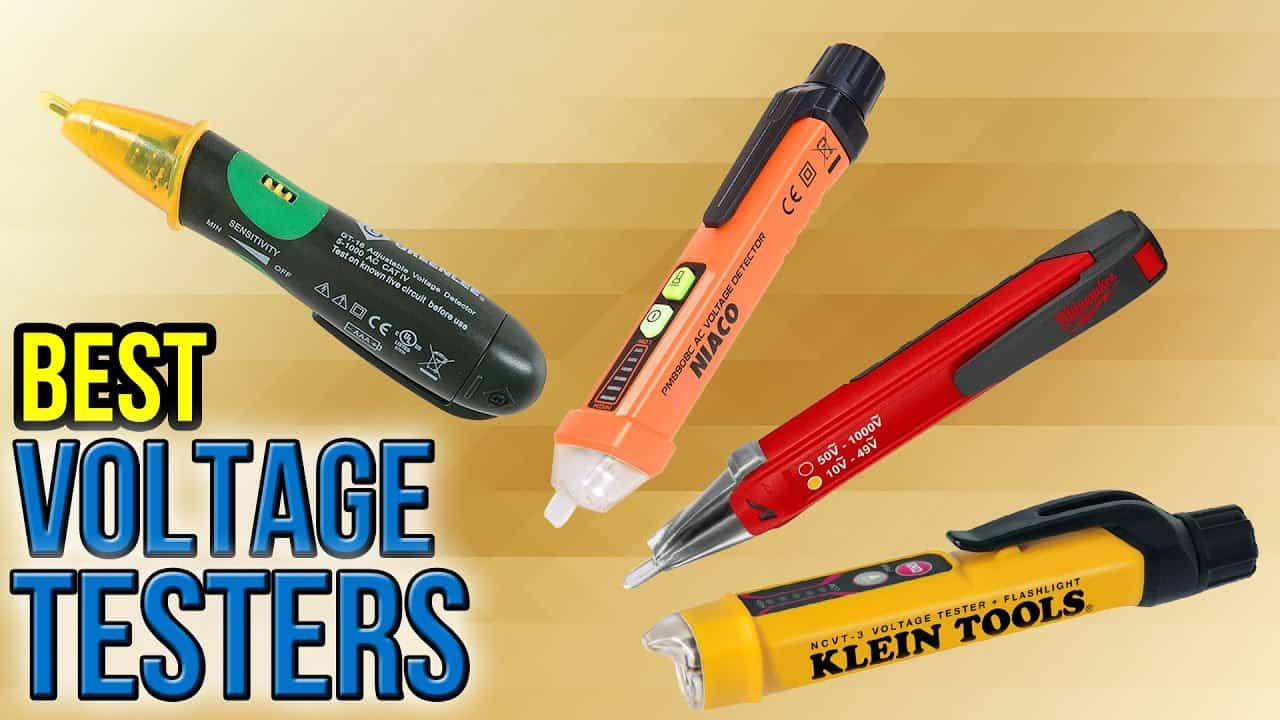In this detailed guide, we’ll explore everything you need to know about voltage tester pens, also known as volt sticks. These handy tools are essential for anyone working with electricity and require a quick and efficient way to check for the presence of voltage. We’ll delve into their working principles, different types, and provide insights on how to use them effectively.
1. What is a Voltage Tester Pen?
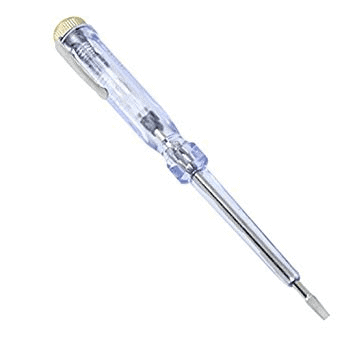
A voltage tester pen, or volt stick, is a compact and straightforward device used to check for the presence of voltage without the complexities associated with multimeters or clamp meters. When you’re troubleshooting electrical issues or working with electrical systems, knowing whether there’s voltage present is critical. A non-contact voltage tester pen is your initial go-to tool for this purpose.
These pens are designed to detect AC voltage in wires, outlets, circuit breakers, lighting fixtures, power cables, and more. They often provide both auditory and visual signals to indicate the presence of voltage. Some even use LED lights or digital displays to show the voltage level. The fundamental working principle of voltage testers is based on capacitive coupling, allowing them to sense voltage without physical contact with the wire or surface being tested. They are also commonly referred to as test lights. Their primary role is to protect users from accidental electric shocks.
Difference between Voltage Tester Pen and Multimeter

Function
A significant distinction between a voltage tester pen and a multimeter is in their function. A voltage tester pen’s primary purpose is to determine the presence of voltage. In contrast, a multimeter is a multifunctional tool that can measure various electrical parameters, including voltage, current, and resistance.
Working
A multimeter works by checking for low resistance between two points to verify their connection. It introduces a small current into the circuit, measures the potential difference across the points, and determines resistance based on the voltage drop. In contrast, a voltage tester pen is a straightforward device with two wire probes that need to make contact with live and neutral wires. When current flows, the pen’s neon bulb illuminates.
Safety
For safety, a multimeter requires breaking the circuit connection to attach it in series, which can be complex and potentially dangerous for inexperienced individuals. In contrast, a voltage tester pen, especially a non-contact one, is the simplest and safest tool for voltage testing. It allows testing without physical contact with wires or components, ensuring user safety.
Working Principle of Non-Contact Voltage Tester

Non-contact voltage testers operate by monitoring the electric field’s flux lines between the live component and the earth’s potential. These testers detect voltage by detecting a tiny capacitively coupled current between the active circuit and the ground. When voltage is present, non-contact voltage testers light up without physical contact.
Also read: Electrician Gloves
The tester’s tip contains a sensor that is positioned within the electromagnetic field. When the tip contacts a conductor, outlet, or supply cord, a built-in sensor at the tip detects voltage. This detection is achieved through capacitive coupling, where you become the ground reference by holding the tool. The tip lights up in red, and the device beeps to indicate the presence of electricity.
Types of Voltage Tester
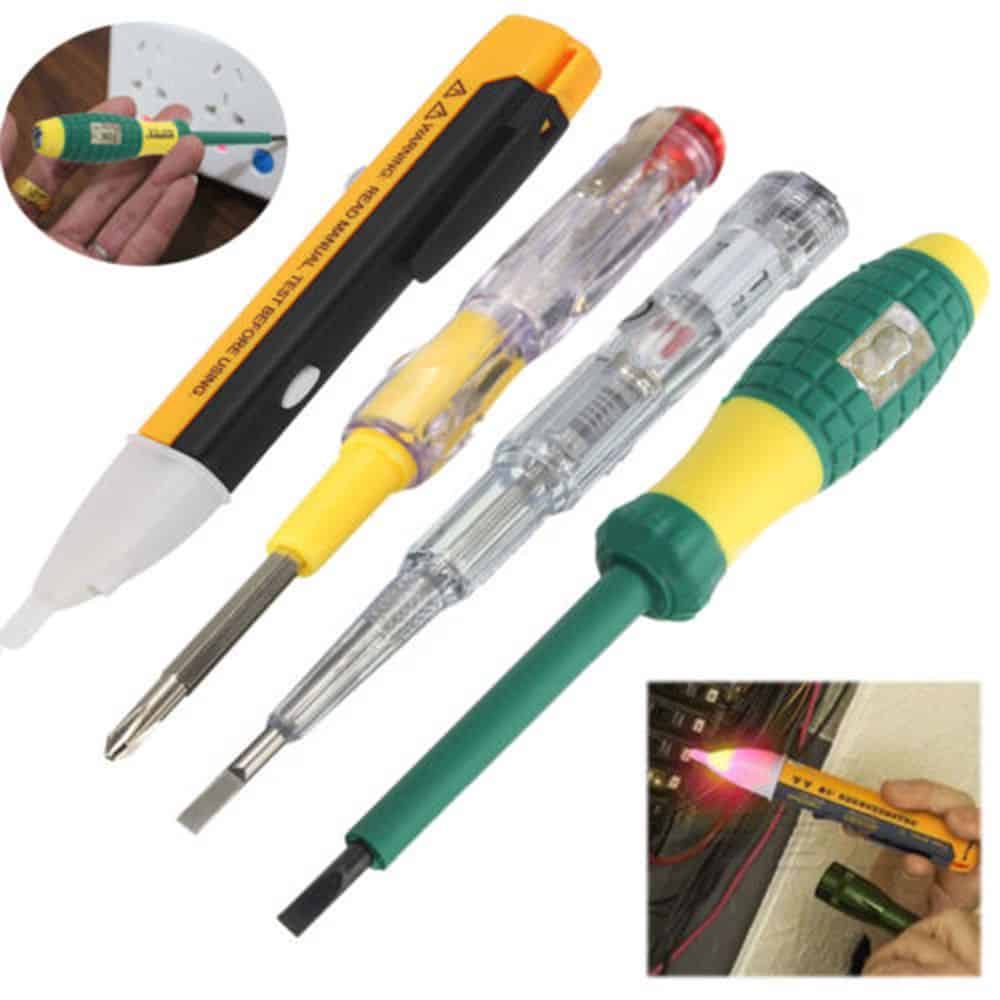
Non-Contact Voltage Tester
Also known as inductance testers, these are safe and straightforward tools for testing voltage without physical contact with wires or equipment. Users can simply bring the tester’s tip close to the wire, and the reading is displayed on the screen.
Also read: Electrician Backpack
Neon Voltage Tester
Neon voltage testers feature a small neon light and metal probes on two wire leads. They determine the presence of voltage in a circuit but cannot display the voltage range. Users must make contact with the circuit wires using wire probes.
Solenoid Voltage Tester
Also known as a multi-function tester, these testers come in both analog and digital variants. They can test voltage and polarity and are commonly used by electricians.
Digital Voltage Tester
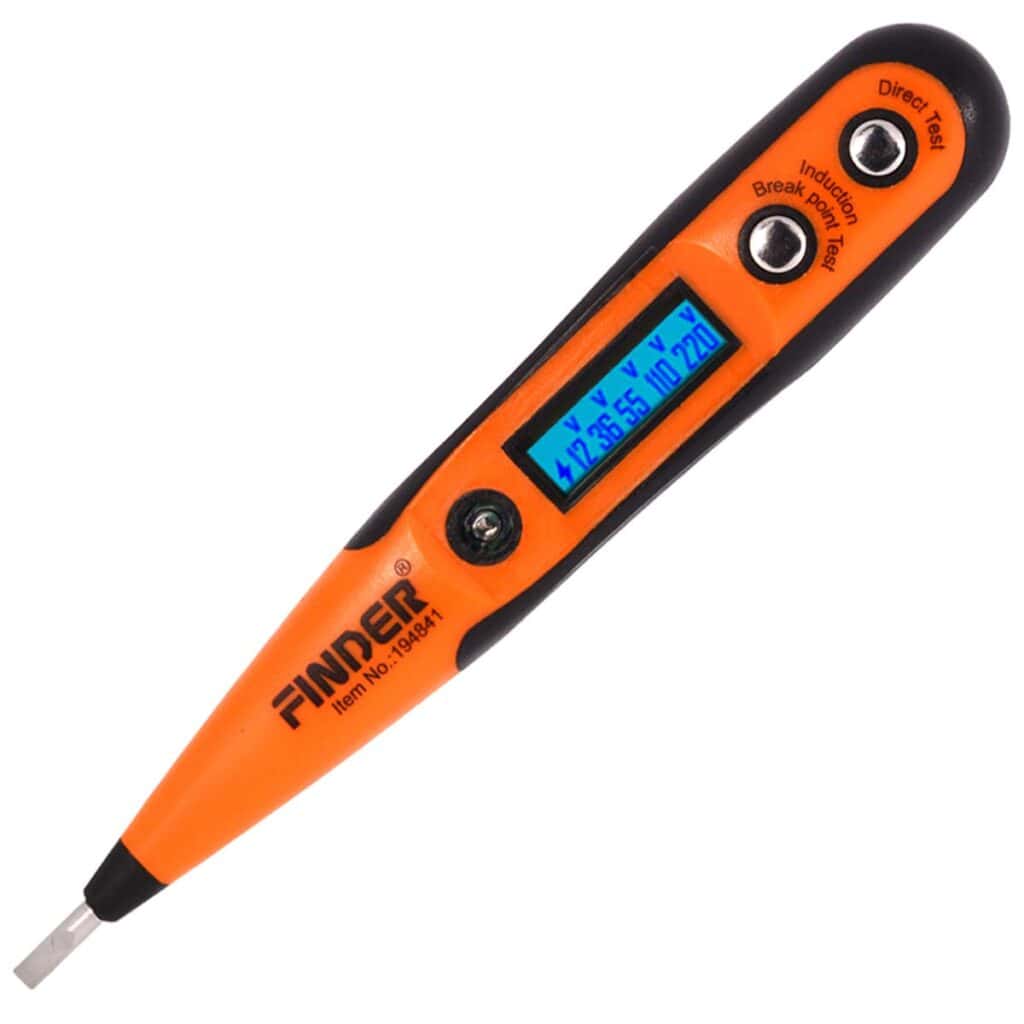
These testers function digitally and without physical contact. They are versatile tools that can identify faults or ensure the normal operation of technical devices. They can also detect overload issues and interfering signals.
To use a non-contact voltage tester, simply touch the tester’s tip to the wire or, when testing an outlet, place it on the faceplate of a shorter plug hole. Most testers will either light up or emit a sound to indicate the presence of voltage.
Note: Always refer to the manufacturer’s instructions and safety precautions provided with your non-contact voltage tester before using it. Each tester may have specific usage guidelines.
- SAFETY FIRST: It will send out multiple alarms through sound and light. When the voltage is detected, the tip will send out red light and beep. When the higher the sensed voltage is, or the closer it is to the voltage source, it beeps at a higher frequency and the percentage value will be larger. At the same time, the screen will be red or green, red means high voltage and live wire are detected, green means low voltage and null wire are detected
- NON-CONTACT: With NCV inductive probe for AC voltage; Just place the tip near a terminal strip, outlet, or supply cord. When the tip glows red and the pen beeps, you know there's voltage present. The live wire detector can automatically detect the live or neutral wire. Ideal for breakpoint Test. Handy circuit tester for electricians, homeowners
- DUAL RANGE: Detects standard and low voltage (12-1000V AC / 70-1000V AC) for more sensitive and flexible measurements. Press the S button to adjust sensitivity and adapt low range for doorbells, thermostats, irrigation wiring etc.; The NCV sensor automatically recognizes the voltage and displays it on the bar graph, and the percentage value can display the voltage signal intensity more intuitively
- SECURITY LEVEL: IEC rated CAT III 1000V CAT IV 600V, Meets CE requirements; The electrical tester is safely double insulated. High Voltage Alert to warn you of voltage above 90V, the screen turn red and the safety symbol on the screen shines
- COMPACT DESIGN: Bright LED flashlight for work in dim ares; Low-Power-Indicator when battery voltage is below 2.5V; Automatic Power Off after 5 minutes without operation or signal detection; Pocket-sized, pen hook allows you to carry it in your shirt pocket. We provide 36-Month after sale service, Please feel free to contact us if you have any concerns
- NON-CONTACT DETECTION of AC voltage in cables, cords, circuit breakers, lighting fixtures, switches, non-tamper-resistant outlets, and wires
- CLEAR INDICATION: Bright LED illuminates green to indicate tester is operational and flashes red and emits a beeping alert when voltage is detected
- BROAD APPLICATION with a 50 to 1000V AC power detection range
- CONSERVE BATTERIES with auto power-off function
- LIGHTWEIGHT AND DURABLE compact design with a convenient clip fits securely in pocket; 6.6-Foot (2 m) drop protection
- NCV: The Non-Contact Voltage Tester is equipped with NCV sensing probe, which provides you with the easiest and safest way to check the voltage in a wire, outlet, or switch. When it is close to an outlet or power cord, the voltage detector will emit different levels of alarm sounds and signal indicator lights to indicate the presence and strength of voltage
- 3 Sensitivity Modes: The live wire tester suits different voltage detection ranges. After powering on, it is in low sensitivity mode by default (buzzer 1 time), press "S" once to enter medium sensitivity mode (buzzer 2 times), and press "S" again to enter high sensitivity mode (buzzer 3 times)
- Detection Light and Flashlight: Built-in detection light and tail flashlight bring you convenience when working in the dark, and can be used as an emergency light in emergencies. The tail flashlight can only be turned on when the tester is off
- Compact Design: The pocket-sized electrical tester pen comes with a convenient pen hook that makes it easy to carry in your shirt pocket. When the battery voltage is lower than 2.5V, the power indicator flashes 3 times, and the buzzer buzzes and then automatically shuts off, please replace the battery in time. Automatic Power Off after 3 minutes without operation or signal detection
- Widely Applicable: The circuit tester is suitable for checking circuit breakers, lighting fixtures, switches, and outlets, which is the safest way to check for electrical leakage. The electrical tester is perfect for professional testers, DIY users, hobbyists, and homeowners
- SMART BUY: A complete, high-performance kit that offers convenience and value
- COMPLETE OUTLET TESTER TOOL KIT: Includes GFCI Tester (Cat. No. RT210) and Non-Contact Voltage Tester Pen (Cat. No. NCVT1P)
- DETECT COMMON WIRING PROBLEMS: Quickly identifies wiring issues in standard and GFCI receptacles
- GFCI OUTLET COMPATIBLE: Confirms the proper operation of ground fault protective devices in GFCI outlets
- VOLTAGE TESTER PEN: Non-contact detection of voltage in cables, circuit breakers, lighting fixtures, switches, and more
- 【Non-contact Voltage Tester】 Ranging 12-1000V AC, You can easily distinguish the live and null wire through different level of alarm sound and LED indicator. ( Note Please:Not Suitable for Christmas Light Testing)
- 【Safe and Convenient】 The Voltage Pen Tester Detectes Voltage in a Non-Contact Way, So Do Not Worry about There Could be any Possibility of being Shocked by the Electricity
- 【High Efficiency】 As Long As Voltage is Detected, the Led in the Tester Pen will Shine
- 【Multifunction, Easy to Use】 It Also Acts as an Emergency Flashlight which can Illuminate the Working Area, You can Use the Non Contact Voltage Detector in Circuit Breakers, Lighting Fixtures, Switches, Outlets, Wires and Anywhere You Need it
- 【CE CAT III600V RoHS Certificate】 A Professional Tester, It is Perfectly Suitable also for DIY'ers, Hobbyists and Home Owners, It Helps You Make the First and the Most Important Safety Check
Questions and Answers related to Voltage Tester Pens
Q1: What is the primary purpose of a voltage tester pen? A1: A voltage tester pen is used to detect the presence of voltage without physical contact, ensuring safety during electrical work.
Q2: How does a non-contact voltage tester work? A2: Non-contact voltage testers operate by detecting the electric field’s flux lines created between live components and the earth’s potential.
Q3: What types of voltage testers are available? A3: Common types include non-contact voltage testers, neon voltage testers, solenoid voltage testers, and digital voltage testers.
Q4: What’s the difference between a voltage tester pen and a multimeter? A4: A voltage tester pen checks for the presence of voltage, while a multimeter can measure various electrical parameters, including voltage, current, and resistance.
Q5: Is a non-contact voltage tester safe to use? A5: Yes, non-contact voltage testers are the safest option for voltage testing as they require no physical contact with wires or components.
Q6: What is the purpose of a neon voltage tester? A6: A neon voltage tester determines the presence of voltage in a circuit but does not display the voltage range.
Q7: Why is it important to follow manufacturer instructions when using a voltage tester? A7: Following instructions ensures the safe and accurate use of the voltage tester and minimizes the risk of accidents.

